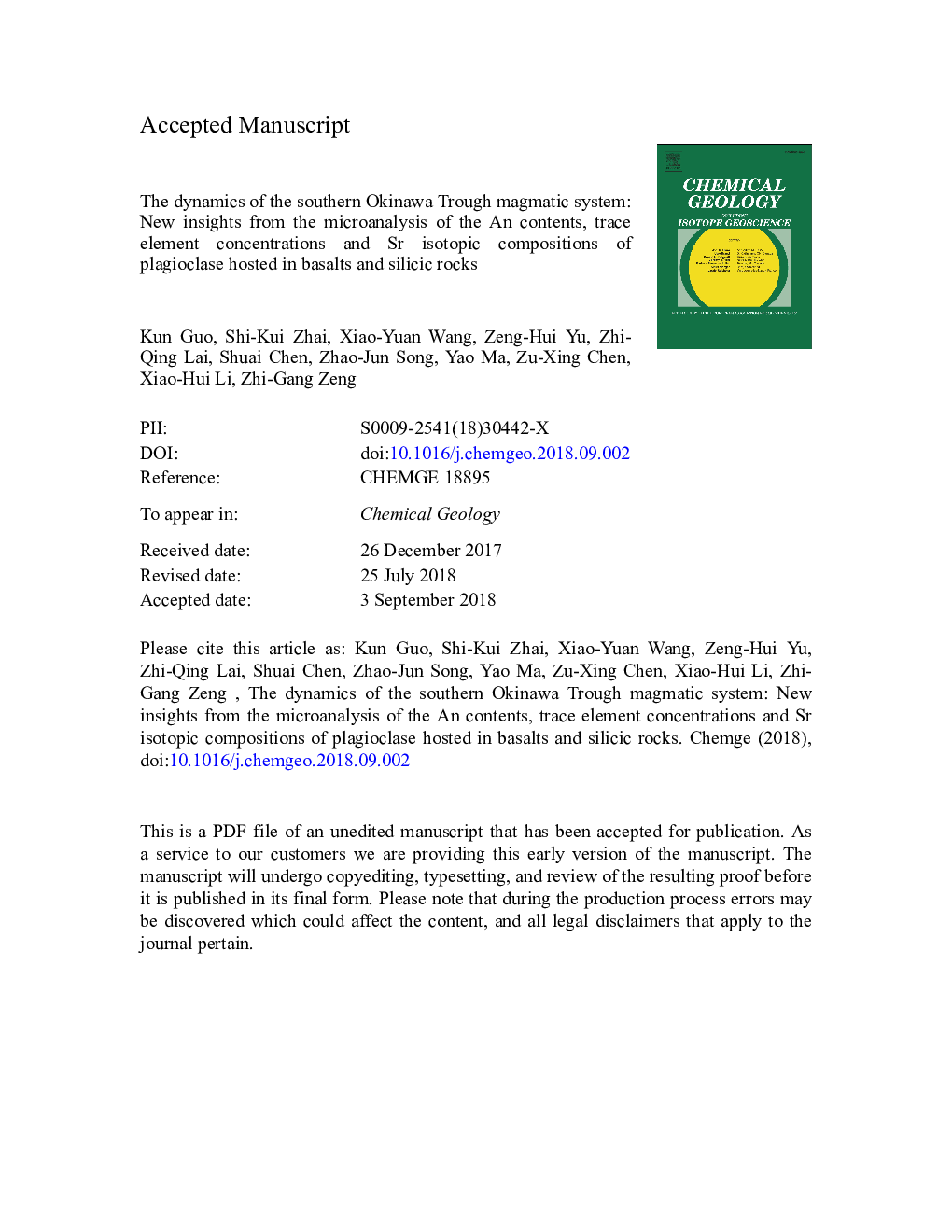| Article ID | Journal | Published Year | Pages | File Type |
|---|---|---|---|---|
| 10224335 | Chemical Geology | 2018 | 67 Pages |
Abstract
Significant textural variations and wide ranges in the An35-89 and trace element concentrations and in situ Sr isotopic compositions (0.705748-0.707520) are observed in plagioclase crystals from silicic rocks in the SOT. The barometry results for the plagioclases from silicic rocks yield a wide range of crystallization depths ranging from 6.6 to 17.8â¯km. The Sr isotopic compositions and trace element concentrations of high-An80 plagioclases in basalt and silicic rocks indicate that there is no direct relationship between these two magma chambers. The negative correlation between the An contents and the Sr isotopic compositions in the plagioclases from silicic rocks indicates that more upper continental crust materials joined the magma source as its evolution proceeded. The presence of core-sieved plagioclase in the silicic rock indicates that decompression and/or magma mixing occurred. Thus, we propose a multilayer magma chamber system to explain the complex plagioclase crystals in silicic rocks. Two potential mush zones were recognized; their generation may have been controlled by the adiabatic decompression melting of lower crustal materials resulting from crustal extension or the post-collisional extension of the Northern Taiwan Mountain Belt. The two potential mush zones at greater depths are relatively basic, whereas the shallow magma reservoirs, which are the host magmas of the plagioclase, are relatively silicic.
Related Topics
Physical Sciences and Engineering
Earth and Planetary Sciences
Geochemistry and Petrology
Authors
Kun Guo, Shi-Kui Zhai, Xiao-Yuan Wang, Zeng-Hui Yu, Zhi-Qing Lai, Shuai Chen, Zhao-Jun Song, Yao Ma, Zu-Xing Chen, Xiao-Hui Li, Zhi-Gang Zeng,
